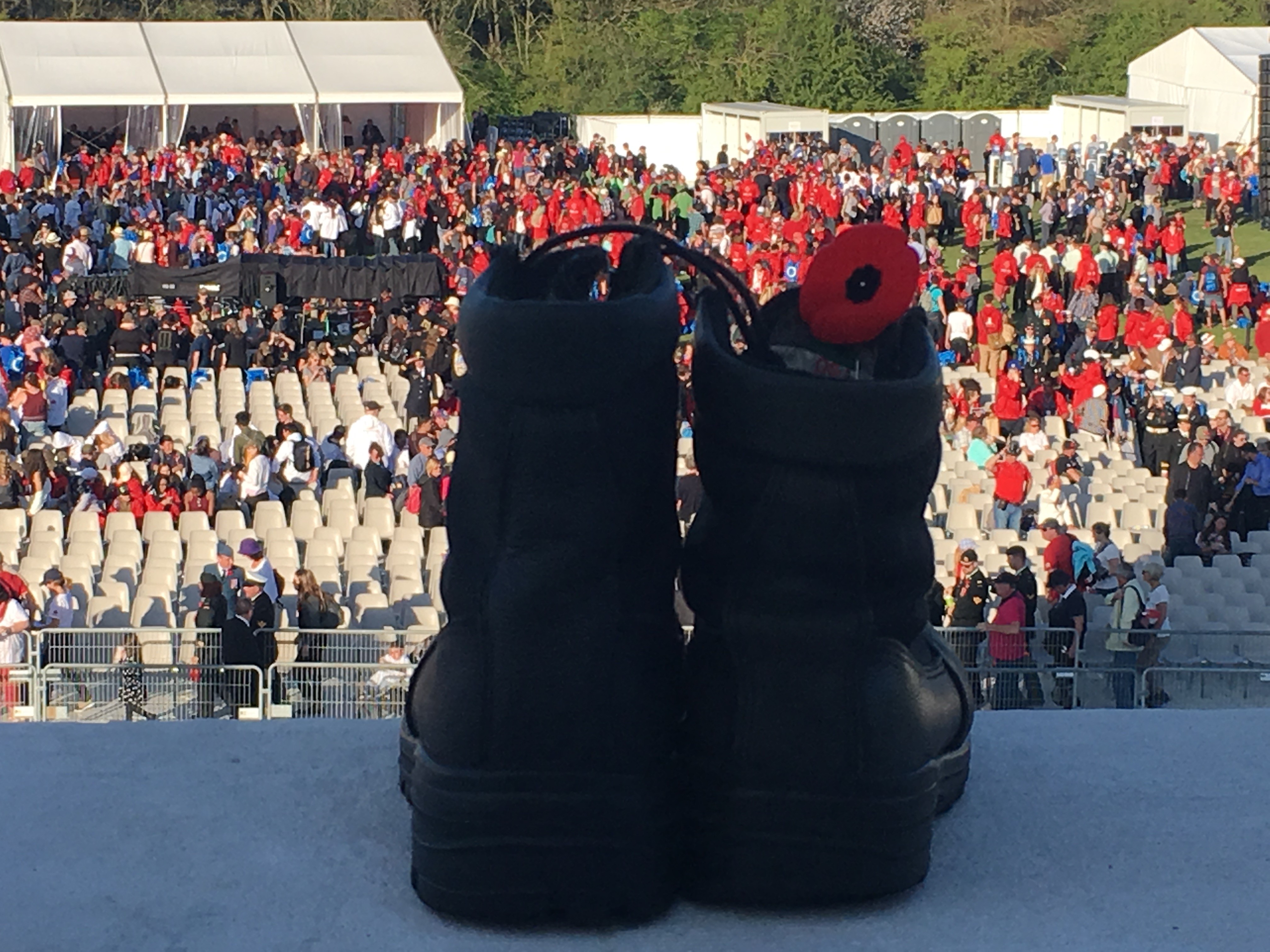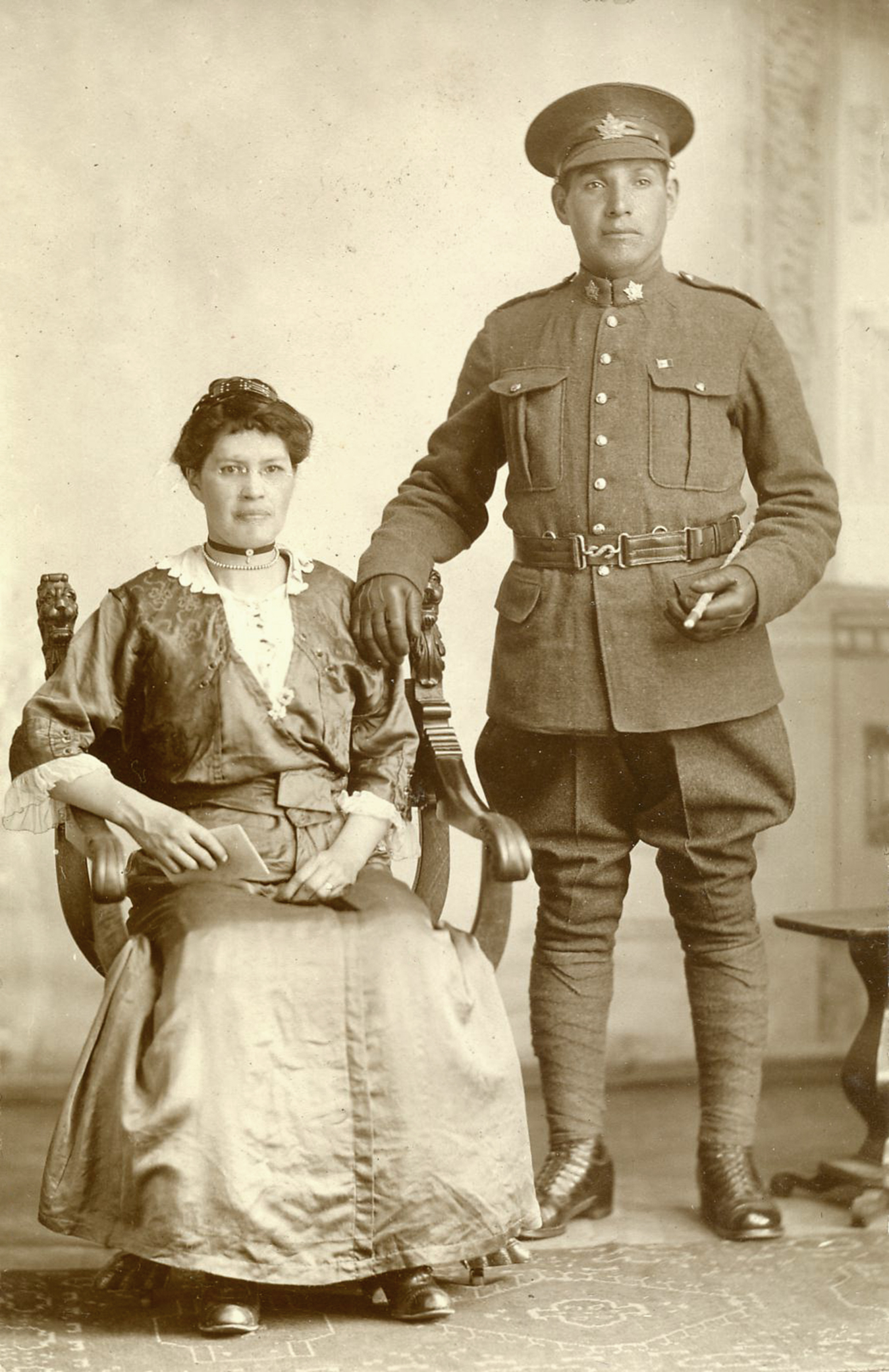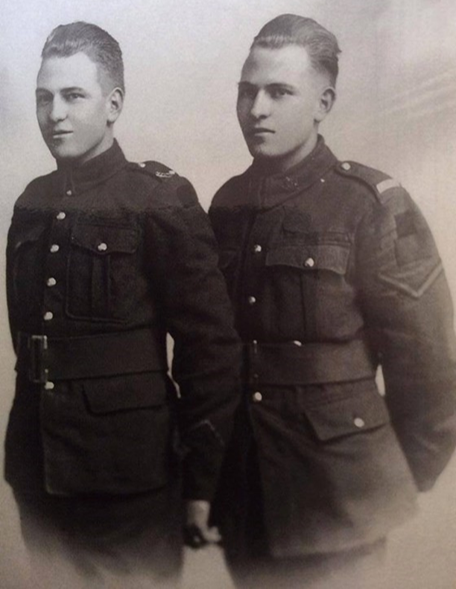Portraits of Battle: Filling Empty Boots
Posted: Tuesday, May 25, 2021
Written by Peter Farrugia

Empty combat boots at the Vimy Ridge monument for the 100th anniversary of the battle (image care of Jason Long)
On April 9, 2017, Canada marked the centenary of the battle of Vimy Ridge with a ceremony attended by some 20,000 people. One of the most striking elements of the day’s events was the arranging of combat boots in ordered rows around the soaring monument created by Walter Allward. Many of those present were deeply touched by this summoning of the Canadian dead. But what does a ceremony like this say about our understanding of this iconic battle or, by extension, the First World War of which it formed a part? If anything, our attempts to commemorate Vimy, or the war in general, have underlined the contested and ever-changing nature of memory and the complicated relationship that exists between it and history.
Nowhere was this underscored more clearly than in the remarks of Prime Minister Justin Trudeau on the day. He declared:
One hundred years ago, on a gentle slope in France, the four divisions of the Canadian Corps fought for the first time as one. They were ordinary – yet extraordinary – men, from all corners of the country: Francophone, Anglophone, new Canadians, Indigenous Peoples ... Many of the soldiers wearing the Canadian uniform that day were immigrants to this country. People of many languages and backgrounds, representing every region in Canada, fought for the values we hold so dear: freedom, democracy, and peace. In the words of one veteran: ‘We went up Vimy Ridge as Albertans and Nova Scotians. We came down as Canadians.’[1]
But how accurate were his observations? Can one battle be lauded as precursor of our contemporary multiculturalism when the vast majority of those who served in the CEF who were not Canadian-born were drawn from the British Isles? Dare we suggest that this one battle was a watershed for Indigenous warriors who served in the CEF when the men who sacrificed so much remained wards in the eyes of the Canadian government? Was the Prime Minister’s speech simply a re-mobilizing of those who fought in 1917 for contemporary political purposes? Perhaps we still have work to do to pour flesh and bone into those empty combat boots above the Douai plain. Perhaps the parade ground neatness of the ordered ranks was not quite the appropriate image for the day.

Wilfred Lickers and his first wife, Eva (family photograph)
Portraits of Battle: Courage, Grief, and Strength in Canada’s Great War was born of the desire to move beyond a monochromatic interpretation of the experiences of Canadians in the First World War. It began with recognition of an arresting fact: some 13% of all deaths in the War occurred as a result of the ten costliest battles in which the Canadian Expeditionary Force (CEF) took part.
A team of eleven historians was tasked with writing in a new register, combining eyewitness account, biography and exploration of important historiographical debates. We sought to “go over the ground again”, to glean new details regarding battles well-known and obscure from war diaries of combat units, official histories and other sources. This gave us a fuller picture of the push and pull of battle, of improvisation and even, in some instances, chaos.
The biographical element of our work was equally important to this anthology. It enabled us put names and faces to the casualty figures that, all too often, lose impact given their size. And so, in Portraits of Battle we meet Eddie McKay, a Canadian of humble origins who flew in the Royal Flying Corps and saw action during the Battle of Flers-Courcelette. We are introduced to Wilfred Lickers, a soldier from Six Nations who was simultaneously battling the enemy at Hill 70 and authorities back home, who controlled his pay even as Lickers risked life and limb. We learn about Katherine Macdonald, Gladys Wake and Margaret Lowe, nurses killed in the line of duty during a German bombing raid in May 1918. And we hear the poignant story of the Westcott twins, Arnold and Clarence, one killed in action and the other haunted by his brother across the decades.

Arnold (right) and Clarence Westcott, 1915. Family photograph used with permission of Clare Westcott.
In addition to the eyewitness and biographical features of the essays in this volume, the authors have also addressed some of the most enduring and complex debates surround the Great War. Did Canadian troops benefit from a Learning Curve as their leaders adapted to the realities of the Western Front? In what ways did gender expectations – for both men and women – shift between 1914 and 1918? How did people cope – both soldiers trying to retain a sense of self amidst the carnage and loved ones dealing with uncertainty and, in many cases, crushing grief upon the loss of loved ones? How have history and memory collided in our construction of the public memory of the Great War in Canada?
In the process of weaving these elements together, we have sought to convey a more fully orbed portrait of the First World War. We explore the courage of the decorated soldier and the collapse of individuals pushed beyond their limits, the grief of families who would never see their beloved again and the laughter of the soldier at the concert party or on the playing field with his comrades. It is this “both and” mentality that we need to adhere to as we seek to make sense of this watershed moment in Canadian history, if we are to allow the ghost army that was mustered on the slope of Vimy to stand down at last.
Peter Farrugia is an associate professor in the History and Social and Environmental Justice programs at Wilfrid Laurier University and a fellow of the Laurier Centre for Military, Strategic and Disarmament Studies.
[1] Statement by the Prime Minister of Canada on the 100th Anniversary of the Battle of Vimy Ridge,” 9 April 2017 (emphasis added), http://pm.gc.ca/eng/news/2017/04/09/ statement-prime-minister-canada-100th-anniversary-battle-vimy-ridge.
